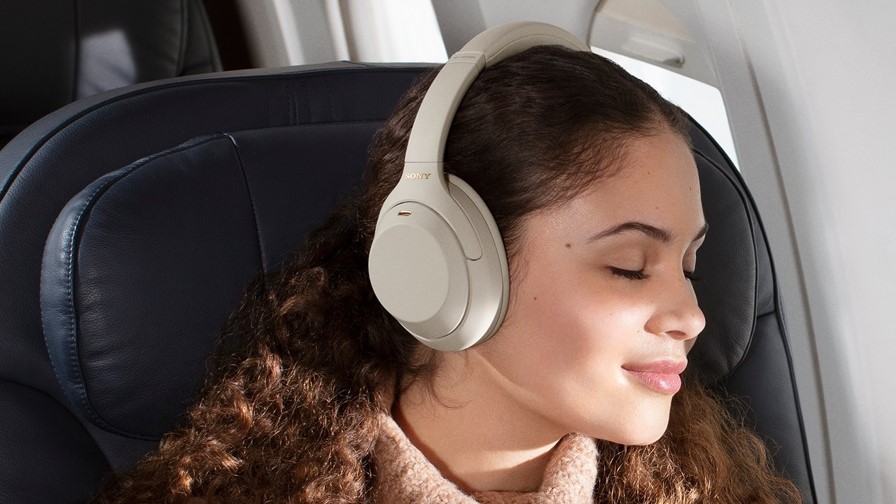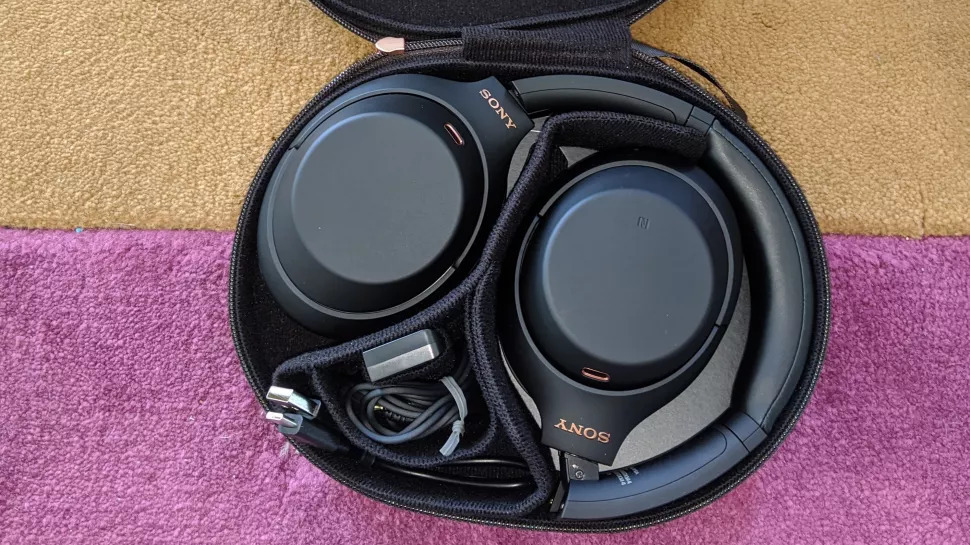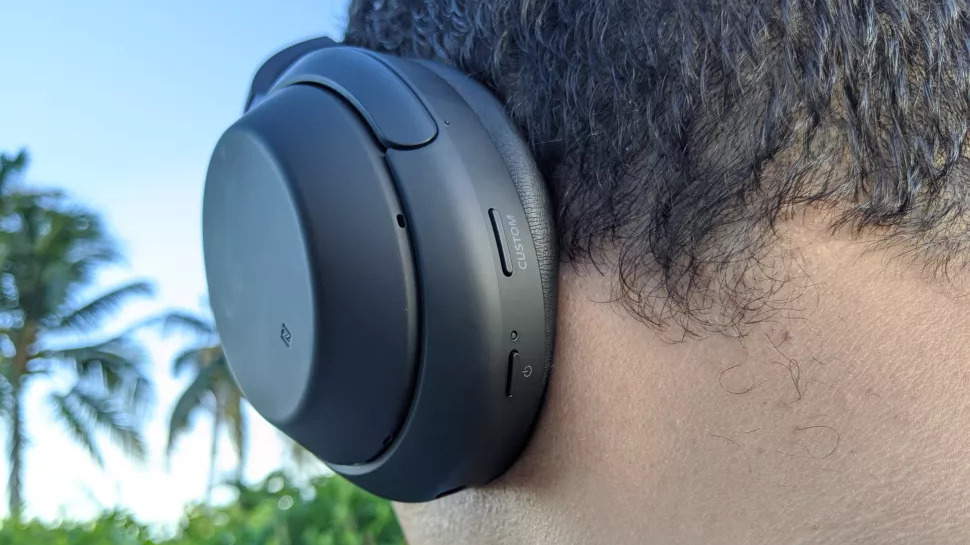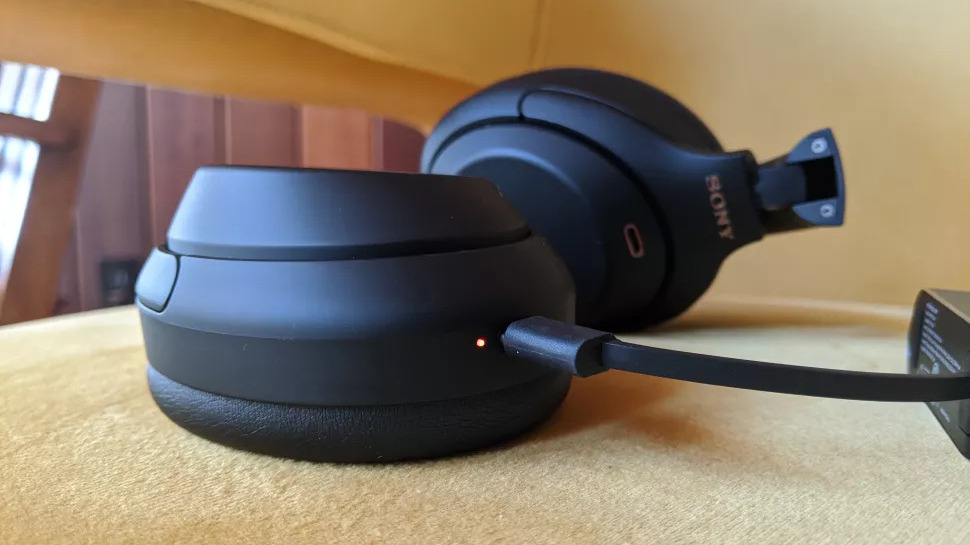Why the Sony WH-1000XM4 headphones beat AirPods Max and Bose 700
Want the best noise-cancelling headphones? Here’s why the Sony WH-1000XM4 is still our top pick

The Sony WH-1000XM4 launched in August 2020 to high expectations, but instantly proved that hype was deserved. Here was a comfortable, stylish and stellar-sounding pair of headphones complete with active noise cancellation (ANC). It was an easy addition to our best noise-cancelling headphones list.
What’s even more impressive is that it still sits in the top spot today. The WH-1000XM4 has both weathered the arrival of new ANC cans like the AirPods Max and continued to fend off older rivals like the Bose 700, all while its price gradually ticks downwards. Here’s why you can still count the Sony WH-1000XM4 as the best noise-cancelling headphones on the market.
- More of the best over-ear headphones
- Want something smaller? Check out the best noise-cancelling earbuds
- Plus: Windows 10 finally getting full AirPods support in imminent update
Lower price, higher value

While the Sony WH-1000XM4’s $350 launch price was never exactly chump change, it was pretty good considering the competition. The Bose 700 had arrived a few months earlier at $400, and Sony’s cans offered a very similar feature set.
By the time the AirPods Max released with its $549 price tag, the WH-1000XM4 was routinely available for less than $300
By the time the AirPods Max released, with an infamous $549 price tag that’s barely wobbled since, the WH-1000XM4 was routinely available for less than $300. At the time of writing, the WH-1000XM4 is on sale at its joint-lowest-ever price of $278, which is a genuine bargain.
Is it not worth paying more? The Bose 700 and AirPods Max do have their appeal, to the point where we also consider them among the best over-headphones you can buy. But on top of simply being more affordable, the WH-1000XM4 can outmatch its pricier peers on other metrics too.
Divine design

The WH-1000XM4 makes only minor tweaks to the design of its predecessor, the Sony WH-1000XM3, but they add up. For one, it cuts down on weight, and our reviewer Alex Bracetti found that the WH-1000XM4 somehow manages to feel a little lighter than the Bose 700, despite the two ANC headphones weighing the same.
Sony also improved the texture of the earcup padding covers, dropping the more plasticky-feeling material of the WH-1000XM3 for a softer finish on the WH-1000XM4. Besides being better at shrugging off scratches and other superficial damage, the WH-1000XM4’s padding makes for an even comfier fit that the Bose 700 and AirPods Max struggle to beat.
Get instant access to breaking news, the hottest reviews, great deals and helpful tips.
Then there’s the touch controls. The AirPods Max’s Digital Crown is great, and using touch sensors instead of more tactile buttons can be risky, but the WH-1000XM4 really nails its controls. Each earcup features an intuitive and touch panel onto which you can perform a range of tap, swipe and slide gestures with ease. Notably, the Bose 700 uses a similar system, though it doesn’t feel quite as responsive as Sony’s take.
A better balance of ANC and sound

It’s true that the Bose 700 has very slightly more effective ANC than the WH-1000XM4, while the AirPods Max offers more high-tech audio thanks to its Adaptive EQ and spatial audio features. And yet, the WH-1000XM4 still delivers the best overall balance of straight sound quality with high-grade ANC — along with a few special features of its own.
We’ve yet to test a pair of over-ear headphones that sounds as good as the WH-1000XM4 without costing significantly more.
We’ve yet to test a pair of over-ear headphones that sounds as good as the WH-1000XM4 without costing significantly more. The frequency range is impeccably balanced, so bass is powerful but not overwhelming and the treble is bright but not sibilant. Sony’s headphones also strike the perfect combination of a wide, dramatic soundstage with the ability to reproduce fine, more intimate details.
Besides, the noise cancellation isn’t that far off the class-leading Bose 700. Only a small handful of sounds that the 700 blocks out can make it past the WH-1000XM4’s highly capable ANC, and it usually takes several of those sounds at once to produce an audible difference.
The WH-1000XM4 is also compatible with Sony 360 Reality Audio, so it too has an object-based surround sound format to counter spatial audio. Together with full EQ customization through the Headphones Connect app and NFC for faster pairing, this is a highly intelligent pair of headphones as well as one of the best-sounding.
Battery life well spent

We got 29 hours of ANC-enabled playback from the WH-1000XM4, so longevity is one area in which it’s overtaken by newer noise-cancelling headphones like the Urbanista Miami (40 hours). However, that’s a much simpler set, without the WH-1000XM4’s versatile features and audio performance.
The WH-1000XM4 is also still a lot longer-lasting than its two biggest rivals, the Bose 700 and AirPods Max. Both of these are rated for 20 hours of ANC playback, so the WH-1000XM4 will provide you with nearly 50% more uptime between charges. And did we mention it’s cheaper?
Bottom line
Different aspects of headphones will matter to different people; one may be willing to forgo ANC in favor of longer battery life, while another might compromise on comfort if it means getting the best possible sound quality.
What makes the Sony WH-1000XM4 the overall best noise-cancelling headphones is that it comes the closest to having everything: it’s extremely comfortable, easy to use, sounds excellent, cancels noise well, lasts long, comes stuffed with features and costs less than its competitors. It may not be the newest, but it’s certainly the greatest.
- More: The best cheap wireless earbuds we've tested

James is currently Hardware Editor at Rock Paper Shotgun, but before that was Audio Editor at Tom’s Guide, where he covered headphones, speakers, soundbars and anything else that intentionally makes noise. A PC enthusiast, he also wrote computing and gaming news for TG, usually relating to how hard it is to find graphics card stock.
